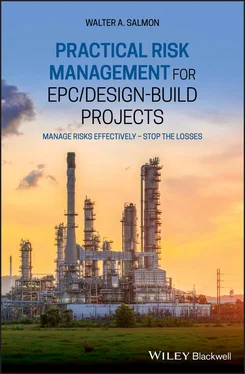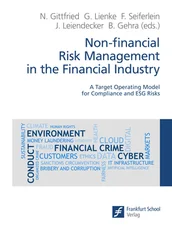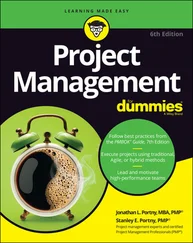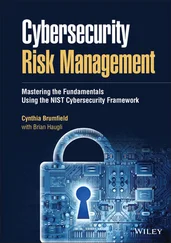1 ...7 8 9 11 12 13 ...19 Under the EPC approach, the Contractor is, just as under the Design-Build arrangement, still the one-stop shop for all implementation activities beyond the basic design work (including the Detailed Design work and, sometimes, even for undertaking the preceding Front-End Engineering Design [FEED] work). However, the EPC Contractor's responsibility will generally also extend to the suitability (fitness for purpose), functionality, quality, and performance of the finished facility, including the quantity and quality of its outputs (which Ron Douglas has elaborated in a whitepaper). 4 This is despite the fact that the Employer's Team will almost inevitably be far more deeply involved in approving the Contractor's work during the implementation process than under a Design-Build approach. Such deeper involvement is primarily needed to ensure that suitable ‘checks and balances’ are employed to confirm, as far as possible, that the completed facility can be operated safely.
Of course, the transfer of such major risks and responsibilities from the Employer to the Contractor inevitably results in higher bid prices for EPC Projects compared with using both the Design-Build and Traditional Contracting approaches. However, many Employers seem happy to settle for that trade-off, in order to gain greater certainty of the overall price to be paid (at the end of the day) and the guaranteed quality of, and outputs from, the completed facility.
2.4.2 Contractor's Obligations
Following from the above, a typical EPC Project is therefore one where the Employer appoints a Contractor to:
1 assume responsibility for and undertake the Detailed Design work for a major facility, based on the Employer's detailed requirements (often referred to as the Basic Engineering Design or, in the Oil and Gas Industry, the Front-End Engineering Design);
2 procure and deliver all the necessary materials to the Project's Site location;
3 construct the facility in its entirety;
4 fully commission the facility and prepare all the operational manuals, ready for handing over to the Employer to start occupying and/or operating it immediately;
5 guarantee the quality and quantity of the outputs (and regulated emissions) from the completed facility; and
6 rectify all problems found in the defects liability period, entirely at the Contractor's cost.
2.4.3 Employer's Participation
Under the EPC approach, the Employer usually does something along the following lines (although there are many different options available):
1 appoints a Design Team (usually a highly specialised Engineering Team) to produce the preliminary design information, which could be either only the Conceptual Design and a Performance Specification or a partial or fully completed FEED, along with a Functional Specification (including full performance output requirements);
2 issues bidding documents in which the Employer places a great deal or even all of the risks squarely on the shoulders of the Contractor;
3 receives technical proposals from Contractors for (a) developing the preliminary design information into the Detailed Design information, (b) undertaking the required procurement activities, and (c) constructing and commissioning the completed facility (or at least assisting the Employer's Team with the commissioning work);
4 assesses the technical proposals from the Contractors with a view to establishing which proposals are technically acceptable in all respects;
5 receives commercial bids from the Contractors who had submitted acceptable technical proposals;
6 awards the Project implementation work to the bidder considered to be offering the best deal to the Employer (which usually means the bid with the lowest bid price); and
7 appoints either construction phase administrators (commonly referred to as a Project Management Consultant) to supervise the Contractor's work (and advise on such matters as variations and extensions of the time for completion of the construction work) or, alternatively, a ‘representative’ to monitor what the Contractor is doing (and who will not usually get too involved with the Contractor's activities, but who will act as the eyes and ears of the Employer and also as the Employer's spokesperson).
2.4.4 Standard EPC Contracts Available
Recognising the vast differences that can occur in respect of an Employer's appetite for accepting risk on large-scale design-and-install/build type Projects, the International Federation of Consulting Engineers (FIDIC) has produced two quite different standard forms of contract for Employers to choose from:
The Yellow Book – ‘Conditions of Contract for Plant & Design-Build’ (2nd Edition, 2017), and
The Silver Book – ‘Conditions of Contract for EPC/Turnkey Projects’ (2nd Edition, 2017). 5
In only one of the above two FIDIC publications is the term ‘EPC’ applied (in the Silver Book). However, the FIDIC Yellow Book (2017) is also clearly a contract suitable for an EPC Project, since the requirement therein is also for the Contractor to complete the Engineering work as well as undertake all the Procurement and Construction activities, as is shown by its subtitle (‘For Electrical & Mechanical Plant, And For Building And Engineering Works, Designed By The Contractor’). Although there is a large degree of similarity between the two sets of FIDIC design-and-install/build type contractual arrangements, one of the principal differences is that the Yellow Book shares the responsibilities and liabilities inherent in the major implementation risks more evenly between the two parties (and also the consequent apportionment of cost sharing for dealing with those risks). By contrast, the Silver Book requires the Contractor to bear nearly all the risks entirely at its own expense, regardless of what those risks are or how onerous they are.
Another interesting thing to note is that the participants acting for the Employer are quite different between the FIDIC Yellow and Silver Books. In the Yellow Book it mentions the Engineer, while in the Silver Book there is only an Employer's representative (whose role is markedly dissimilar from the Engineer mentioned in the Yellow Book). The difference between the Yellow and Silver Books is primarily a result of the ‘turnkey’ arrangement catered for under the Silver Book, where the Contractor is expected to operate far more independently of the Employer and accept a far greater risk burden than is envisaged under the Yellow Book. Under the ‘turnkey’ arrangement, FIDIC expects the Employer to do nothing much more than (i) not hinder the Contractor in its implementation efforts, (ii) pay the Contractor in accordance with the contractual provisions, and (iii) wait to be handed the keys of the fully completed facility. Further, FIDIC appears to use the term ‘turnkey’ in the Silver Book to refer to the situation where the Employer passes over virtually every conceivable risk to the Contractor in anticipation of not paying extra for any eventualities or extra work subsequently found to be required. That arrangement is significantly different to the situation where risks are spread more evenly between the Employer and the Contractor (on the basis, say, of looking to see which party is better suited to averting/handling any given risk item), as they are under the FIDIC Yellow Book.
Where the EPC Contractor is required to take full responsibility for handing over the facility in the required time-frame based on the premise that no changes to the Employer's requirements will be evidenced, the contract is sometimes referred to as being Lump-Sum Turnkey in nature (‘LSTK’ being the abbreviation/initialism commonly used for that term). Under an LSTK Contract, the Employer will generally expect no extra costs to be payable to the Contractor for completing the work specified in the contract. It should be noted that all LSTK Projects are EPC Projects, but not all EPC Projects are LSTK contracts.
Читать дальше












